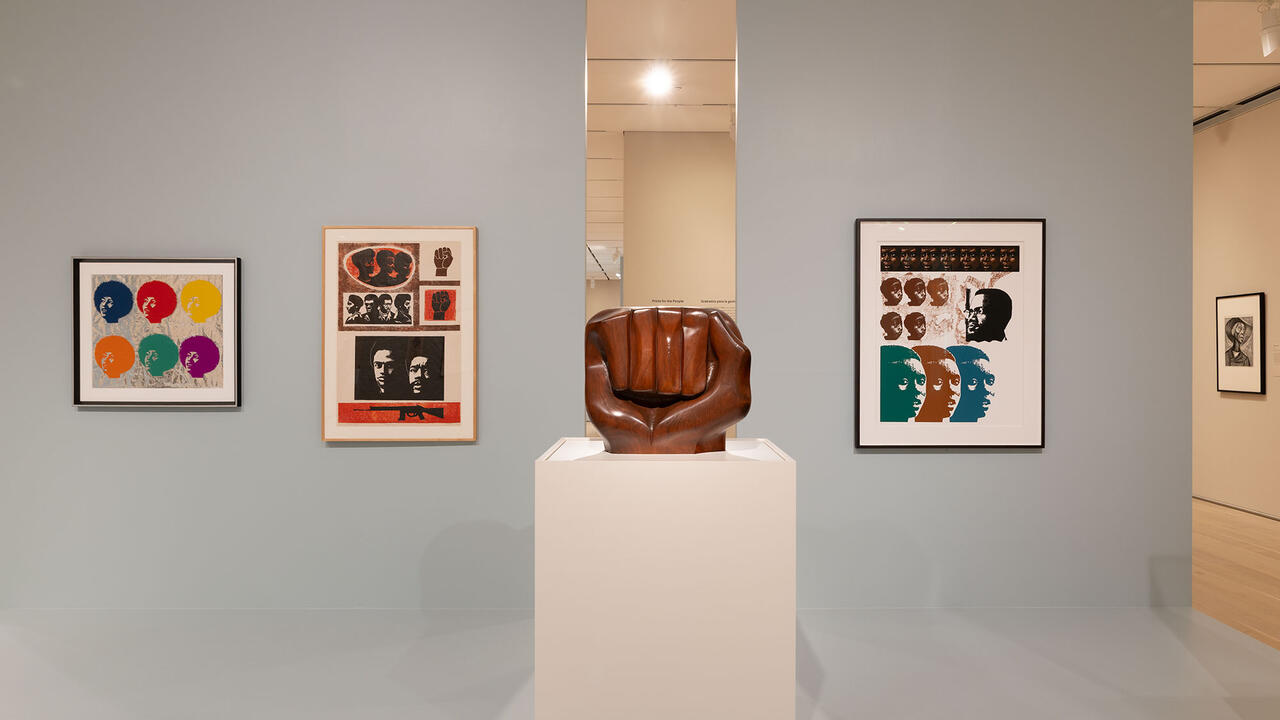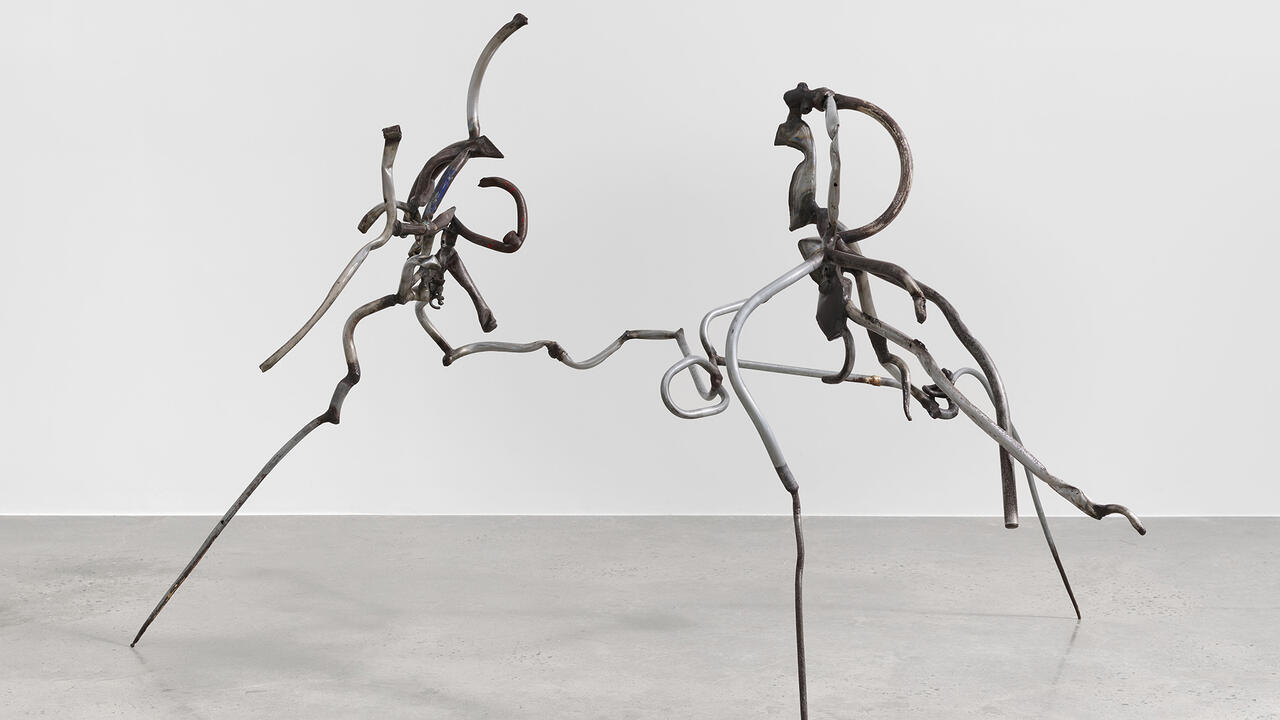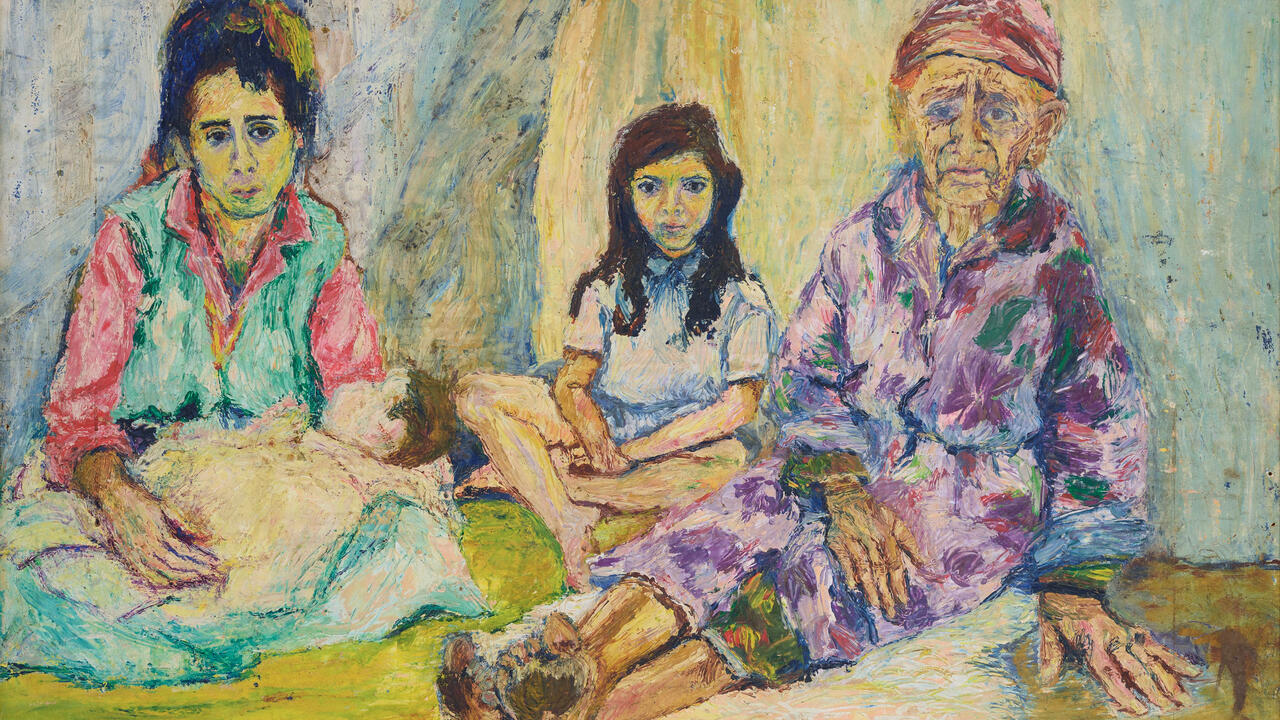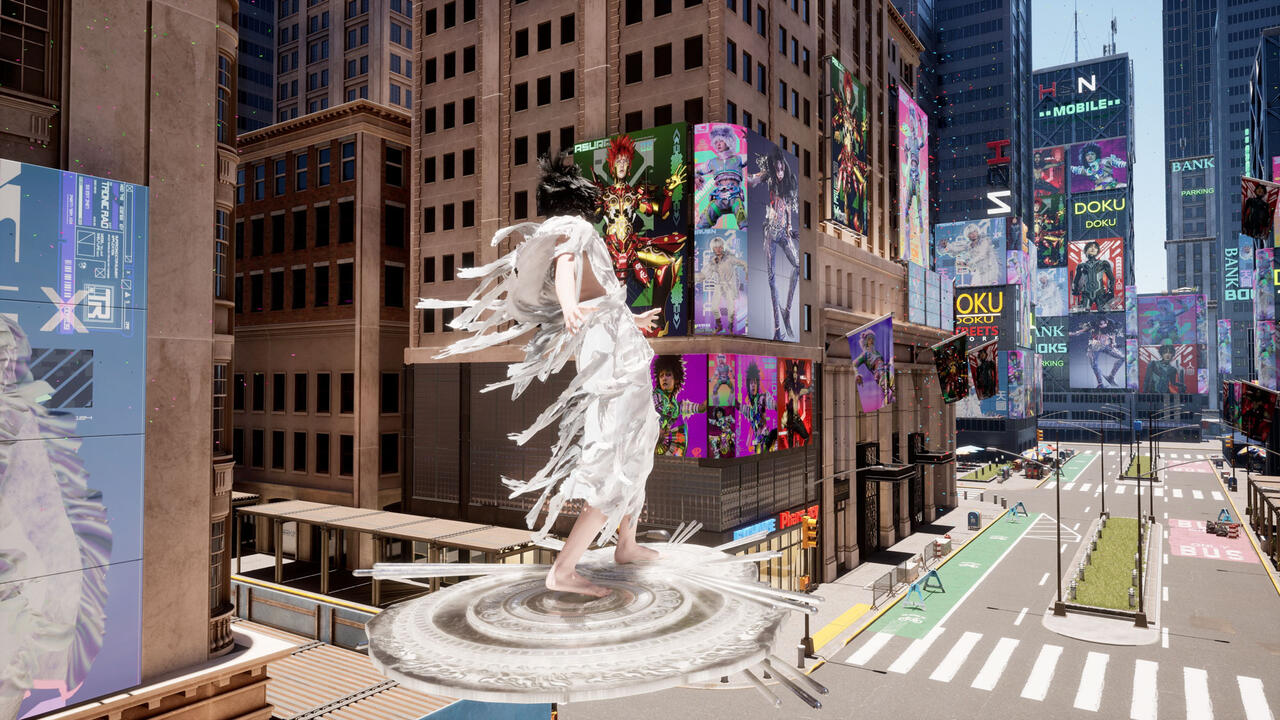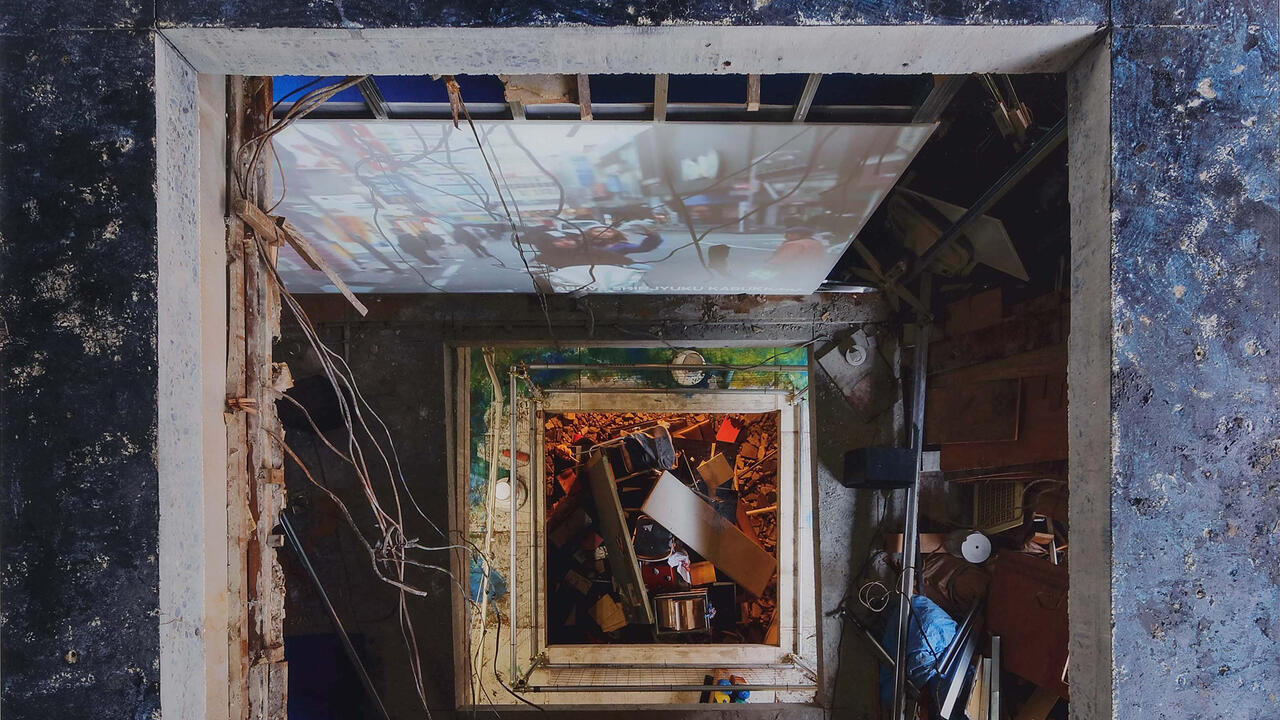Make New History
A report from the Chicago Architecture Biennial, whose interesting provocation sadly remains unanswered
A report from the Chicago Architecture Biennial, whose interesting provocation sadly remains unanswered

Chicago is a right angle city: its downtown high rises emerge from flat, sprawling plains, then seem to plunge into the waters of Lake Michigan. The Home Life Insurance Building, generally considered the world’s first skyscraper, was completed here in 1884. And Carl Sandburg’s ‘City of the Big Shoulders’ was the first major American stage for Europe’s modernist masters, from Mies van der Rohe to Adolf Loos, when they entered the 1922 Chicago Tribune Tower competition, the first design contest of its kind.
This is a story almost every architecture student knows. But it’s not the one that makes Chicago an interesting home for the largest architecture and design exhibition on the continent. This ‘quintessentially American city’ captivates because it is a cultural microcosm, rift by race, class and politics. Home to Barack Obama, it is also an oasis of blue in a sea of red, a liberal Midwestern metropolis in the heart of Trump country.

‘Make New History’, the theme of the second Chicago Architecture Biennial – curated by Sharon Johnston and Mark Lee of Johnston Marklee & Associates – could be read as a provocative invitation for the US to address the wounds of its brutal past, which have long festered beneath a sanctioned collective amnesia. Making new history in the age of post-truths may mean interpreting the past to more fairly acknowledge its victims. This is especially true of Chicago, a city that absorbed tens of thousands of freed slaves during the Great Migration, who then suffered unprecedented housing and employment discrimination, and whose great-grandchildren live today under a regime of de facto segregation, in Southside slums rife with gun violence. Perhaps a ‘new history’ for Chicago is a rewritten one: a reckoning with the myriad ways racism has divided and pressurized the city over decades, and a set of proposed solutions to the problem. In the centre of a country run by a xenophobic real estate developer likely to gut the federal public housing budget, an architecture biennial could make radical strides by focusing on the ways smart, sustainable construction can preserve and improve democratic societies, rather than on glitzy projects for the exclusive few.

This is not that show. Instead, Johnston and Lee have traded the political for the pretty, and their historical references are mostly old hat. In one of the exhibition’s main galleries, they have restaged the Tribune challenge, inviting 16 contemporary architectural practices to design and fabricate a tower for the building’s current site. At nearly five metres each, the motley models have been lined up like columns in a hypostyle hall (what they’ve called a ‘Vertical City’), accentuating the high, vaulted ceiling in the Chicago Cultural Center, an ornate, neoclassical former library. This object-heavy approach is generous to lay viewers unaccustomed to the dense theoretical wall texts and schematic drawings that often stifle architecture exhibitions; at the same time, none of the towers were accompanied by a wall text, so visitors to the opening wandered through them as if lost in a maze, stopping to snap selfies for Instagram. Their cumulative visual effect is impressive, to be sure, but few of the present designs are particularly groundbreaking. There are classical riffs on Loos’s oversized Doric column from London’s 6a architects and Lisbon’s Barbas Lopes Arquitectos; and modular, Miesian entries in glass and steel, from Mexico City’s PRODUCTORA, New York’s MOS, and Tokyo’s Go Hasegawa. Other firms chose to simply smash together preexisting designs – either their own, such as Tatiana Bilbao Estudio from Mexico City, or more historical structures, as with Sam Jacob Studio, London. Kéré Architecture’s standout design, a round tower divided into four sections and cut through with large oculi, employs structural sleight-of-hand to appear strangely top-heavy; the different rotation of these sections, with their varied cladding, window placement and core organization, might be particularly adaptable to the busy flow of traffic where Michigan Avenue meets Chicago’s riverfront promenade.

With climate change making daily headlines, the biennial is striking for its lack of projects that focus on environmental sustainability. The notable exception stands alone at one end of the ‘Vertical City’ chamber: called Heliomorphic Chicago, the dozen-plus maquettes of stretched Chicago skyscrapers, designed by Charles Waldheim, the Harvard Graduate School of Design’s Office for Urbanization and Siena Scarff Design, modify the city’s preexisting towers to maximize their annual exposure to the sun – and thus the amount of solar energy they might capture.

If ‘Vertical City’ is a predictable reference to the biennial’s context, ‘Horizontal City’, its counterpart, pushes the prompt-based format too far. In an adjacent gallery, 24 architects were invited to produce models in response to a historic interior; they rest on low plinths like so many grad school assignments, albeit professionally fabricated. There are obvious sources, such as Adolf Loos’s Villa Müller, rendered by BUREAU SPECTACULAR as a fur-covered peepshow box; and MIAO’s interpretation of Duchamp’s Paris apartment, its hinged doors, chairs and tables coated pink and scattered in miniature across the surface of a mirror. Charlap Hyman & Herrero have rendered Yves Saint Laurent and Pierre Bergé’s salon being packed up for auction in precision-cut and painted paper; while Grohbrügge & Chermayeff have dipped further into art history, with a mirror-top sculpture inspired by Manet’s Bar at the Folies-Bergere (1882). The most alluring of these make for dazzling sculptural objects, but offer little in the way of ideas. This city is picturesque, but like its twin lacks a critical message about the present or future of urbanism.

On the ground floor, there is more to takeaway. Paris Haussman by LAN, in collaboration with Frank Boutté Consultants and the Pavillon de L’Arsenal Paris, meticulously assembles maps of changes in the City of Light’s street grid, as well as block shape, size and usage, from the mid-19th century to the present day. A wall of façade drawings charts the change in housing block style over an even longer period, offering a tool for urban analysis that could have been dreamt up by Walter Benjamin. Three new projects by Zao/standardarchitecture rethinking Beijing hutongs – traditional, dense urban dwellings connected by courtyards and narrow alleyways – offer sustainable design solutions to overcrowding, while preserving the local character of Chinese neighbourhoods that developers and the government have been systematically replacing with Western-style condominiums. Make New Hutong Metabolism suggests the form might be a smart way to build outside of China, too; by proposing that new development ‘metabolize’ rather than eradicate existing structures, the project advances an architecture that is both environmentally conscious and cost-effective.

In a small black box theatre, Anri Sala’s Intervista (Finding the Words) (1998) – a tender video portrait of the artist’s mother, and her growing pessimism towards the Albanian Communist dictatorship – has been thoughtfully paired with a photographic slideshow of a low-pressure fountain that Belgian studio 51N4E installed in a public square in Tirana. When the water flows, it wets the plaza’s unpolished marble tiles, revealing a bright patchwork hidden by daily foot traffic. Sometimes, with no more than a dusting, architecture can remind us of utopian ideals that were trampled long ago.
Yet a broadly accessible curatorial strategy is not defined simply by how legibly the content of an exhibition is delivered to a general audience, but by how effectively that selected content speaks to real public concerns, beyond its limited disciplinary interests. Yes, we must make new history – but for whom? One need look no further than Chicago’s Southside to see the immediate effects architectural planning can have on people’s lives, a factor that goes mostly unaddressed. An untitled series of poignant photographs by David Schalliol, tucked discreetly into a hallway of the Cultural Center, depicts the demolition of social housing projects there between 2003 and 2017, many of which have yet to be rebuilt. In them, boys play basketball on chewed-up courts behind modern towers that look as if they’ve been bombed. I’d like to know what those boys think of architecture. I’d like to see it do something for them.
The 2017 Chicago Architecture Biennial ‘Make New History’ runs until 7 January 2018.
Main image: ‘Vertical City’, installation view, Sidney R. Yates Hall. Courtesy: Chicago Architecture Biennial, Kendall McCaugherty © Hall Merrick Photographers









